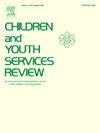旁遮普童工的心理影响:仙女分解分析的应用
IF 1.7
2区 社会学
Q1 FAMILY STUDIES
引用次数: 0
摘要
童工是最脆弱的群体之一,往往是贫困的推动者和推动者,其影响导致的严重后果可能持续到成年。童工的身体伤害有充分的记录,但很少有关于童工对心理健康问题各方面影响的经验文献。本文考察了在理论中承认的童工对PHPs的一个很大程度上被忽视的潜在后果。该研究使用了旁遮普省童工调查(PCLS 2019 - 2020)最新数据集中的五个php维度。通过多变量二元逻辑回归(平均边际效应)和费尔利分解技术,使用描述性统计来了解童工(CLs)和非童工(NCLs)在选定协变量中的PHPs差距。logistic回归结果表明,与ncl相比,CLs更容易在PHPs中下降。费尔利分解分析表明,儿童虐待、儿童上学、母亲和户主的教育程度和家庭财富状况是解释我们研究中两组之间php差距的重要因素。儿童虐待占了cll和ncll之间心理健康差距的53.91%,表明它是造成这种差距的主要因素。如果中等收入阶层的不同财富五分位数分布与中等收入阶层相同,则中等收入阶层的差距最多可缩小22.47%。解决儿童中的初级保健服务问题需要政府、民间社会和国际合作伙伴的持续努力,特别关注那些教育背景较低、属于贫困家庭和不发达阶层的工作儿童。本文章由计算机程序翻译,如有差异,请以英文原文为准。
Psychological impacts of child labour in Punjab: An application of fairlie decomposition analysis
Child labour is among the most vulnerable groups, often a contributor and a driver of poverty, with the impact leads to serious consequences that can persist into adulthood. Physical harms of child labour are well documented but there is little empirical literature on the effects of child labour on various dimensions of Psychological Health Problems (PHPs). This paper examines a largely neglected potential consequence of child labour on the PHPs recognized in the theory. The study used five dimensions of PHPs from the latest data set of Punjab’s Child Labour Survey (PCLS 2019–20). Descriptive statistics were used to understand the gap in having PHPs between child labourers (CLs) and non-child labourers (NCLs) across selected covariates using multivariable binary logistic regression (average marginal effects) and Fairlie decomposition techniques. The logistics regression results indicated that CLs are more likely to fall in PHPs as compare to NCLs. The Fairlie decomposition analysis shows that child abuse, child schooling, mother & household head’s education and household wealth status are the significant contributors in explaining the gap of PHPs between the two groups of our study. Child abuse accounts for 53.91% of the mental health gap between CLs and NCLs, indicating it as a major contributor to the disparity. The gap of PHPs can be reduced up to 22.47% if the distribution of different wealth quintiles of the CLs is identical to the NCLs. Addressing the issue of PHPs among children will require a sustained effort by the government, civil society, and international partners, with a particular focus on working children, those lower education backgrounds, and belongs to poor households and underdeveloped segments.
求助全文
通过发布文献求助,成功后即可免费获取论文全文。
去求助
来源期刊

Children and Youth Services Review
Multiple-
CiteScore
6.30
自引率
6.10%
发文量
303
期刊介绍:
Children and Youth Services Review is an interdisciplinary forum for critical scholarship regarding service programs for children and youth. The journal will publish full-length articles, current research and policy notes, and book reviews.
 求助内容:
求助内容: 应助结果提醒方式:
应助结果提醒方式:


